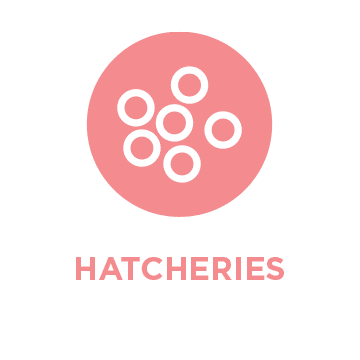East Fork Scott River Restoration
East Fork Scott River Restoration
Project Goal:
Reconnect historic floodplains and enhance aquatic habitat on 6.7 miles of the East Fork Scott River and its tributaries; Restore fish passage to 1.4 miles of cold-water tributary Big Mill Creek; Improve flow management and increase groundwater recharge on agricultural lands; provide education and outreach opportunities for Tribes and local community members.
Project Stages
Planning
Conceptual Design
65% Planning and Design
100% Planning, Design, and Permitting
Implementation
Estimated Completion Date:
2028
Region:
Project Funders
California Department of Transportation
California State Water Board
Fish Affected:
Threats:
Project Description
The Scott River consistently generates some of the largest returns of wild coho salmon in the entire state. However, habitat for coho within the Scott River basin has been degraded by numerous human threats, including legacy mining, grazing, and agricultural water diversions. This project to restore the East Fork Scott River will increase habitat complexity, reconnect floodplains, and restore fish passage to critical cold-water over-summering habitat for juvenile salmon and steelhead. The project is also critically important in the context of salmon recovery throughout the larger Mid-Klamath Basin. Four Klamath dams are scheduled to be removed by the end of 2024 which will improve water quality in the mainstem Klamath River, reduce disease, and increase the number of returning adults looking for suitable habitat conditions in historic spawning and rearing streams. Spawning and rearing tributaries to the Klamath, like the Scott River, act as salmon nurseries for the entire basin.
The East Fork Scott River contains 20%, or 60 miles, of all modeled anadromous habitat in the Scott River watershed. However, much of this habitat is on private property. Restoration opportunities remain scarce due to lack of landowner permission. In 2021, a local landowner sold a pivotal piece of property on the East Fork, with undeniable potential to become a coho salmon stronghold. The Wildlands Conservancy (TWC) purchased the 6,094-acre ranch, encompassing 6.7 miles of critical coho habitat, called The Beaver Valley Headwaters Preserve. The acquisition of this property by a conservation landowner presents an unparalleled opportunity for landscape-level restoration in the headwaters of the Scott River. The property contains three tributary confluences to the East Fork, all within two miles, each with different seasonal and complementary benefits to coho in various life stages. This interconnection of vital habitat types in such proximity, including thermal and off-channel refugia, is invaluable to species survival and ecosystem resilience. Additionally, the project is located less than a mile from the mainstem Scott River. The Preserve represents the gateway to the entire East Fork watershed.
The project contains four main components that work synergistically to address high priority issues in the watershed:
1) Habitat Restoration: aquatic habitat on the Preserve is channelized, incised, and degraded due to road infrastructure, historic land use, and agriculture. We will enhance habitat complexity and reconnect historic floodplains on all 6.7 miles of aquatic habitat on the Preserve - the East Fork Scott River, Big Mill Creek, and Noyes Valley Creek.
2) Fish Passage: Big Mill Creek, a perennial, cold-water tributary, is completely blocked to fish by an undersized, perched culvert on the state highway system. We will partner with CalTrans to replace the culvert with a channel spanning bridge. CalTrout will construct a new stream simulation channel to restore volitional fish passage to 1.4 miles of pristine over-summer rearing habitat that has been blocked for decades.
3) Groundwater Recharge and Flow Management: lack of perennial surface flow in the Scott River is a primary limiting factor for coho, particularly during summer months. The water rights associated with the Preserve are in the process of being partially dedicated instream through a concurrent and previously funded project. Our team will further improve flow management with a water rotation plan that will maximize instream flow while also supporting sustainable grazing practices and ensuring fish protection at all water diversions. We will install riparian fencing and Beaver Dam Analogs (BDA) along 4 miles of Noyes Valley Creek, one of the largest tributaries to the East Fork Scott River. This component will increase groundwater recharge, release cold-water during summer baseflow conditions, and encourage recolonization of beaver.
4) Education and Outreach: we will promote inclusion of the local community including tribal community members and underserved community members through education, outreach, and partnership.
When the project is complete, we will have transformed the landscape of the East Fork Scott River and enhanced community and ecosystem resilience to climate change.
Project Partners:
The Wildlands Conservancy
Scott River Watershed Council
Scott River Water Trust
Siskiyou Resource Conservation District
Quartz Valley Indian Reservation
The Karuk Tribe
Siskiyou County Office of Education
Hamer Environmental
Waterways Consulting
Cascade Stream Solutions
California Department of Transportation
California State Water Board
California Department of Fish and Wildlife
NOAA Fisheries












 Human use of streams, lakes, and surrounding watersheds for recreation has greatly increased with population expansion. Boating, swimming, angling, off-road vehicles, ski resorts, golf courses and other activities or land uses can negatively impact salmonid populations and their habitats. The impacts are generally minor; however, concentration of multiple activities in one region or time of year may have cumulative impacts.
Human use of streams, lakes, and surrounding watersheds for recreation has greatly increased with population expansion. Boating, swimming, angling, off-road vehicles, ski resorts, golf courses and other activities or land uses can negatively impact salmonid populations and their habitats. The impacts are generally minor; however, concentration of multiple activities in one region or time of year may have cumulative impacts.











 Dams block access to historical spawning and rearing habitats. Downstream, dams alter the timing, frequency, duration, magnitude, and rate of change of flows decreasing habitat quality and survival.
Dams block access to historical spawning and rearing habitats. Downstream, dams alter the timing, frequency, duration, magnitude, and rate of change of flows decreasing habitat quality and survival.


